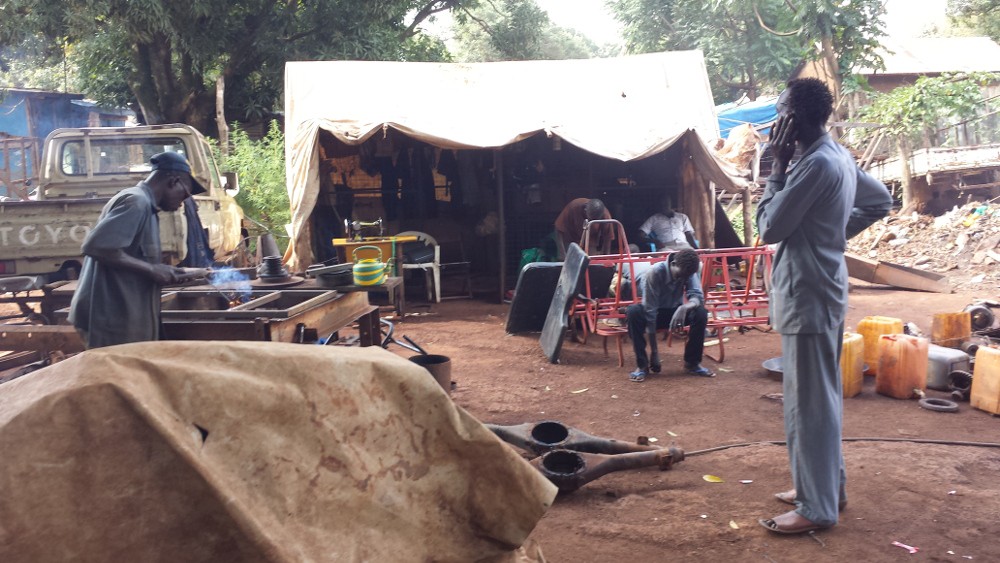
Anwar's welding shop
While it may not be called a hacker/maker space here in South Sudan, the idea of a collaborative work space where people share tools and work on different projects is nothing new. I have always loved working in African workshops, and I think they really embody the ideas of the hardware hackers. I have seen so many machines resurrected from the dead, and hacked together out here. One of my best friends out here runs a shop where they will work on everything from repairing engines to building sawdust fueled bread ovens. The first time I met Anwar who runs the shop I was looking for a pulley to connect to the drive shaft of a small tuk tuk like vehicle that I wanted to have power a small table saw (this worked but it was ridiculously dangerous.) He was busy trying to build a material elevator from a car axle for a nearby construction site. We became fast friends. I often go to his shop to have tea and discuss ides and work together. The shop itself is open air, and could easily be confused for a junk yard, but the things produced and fixed there are really impressive. Most of the things they make are made from scrap metal they reclaim from destroyed vehicles. This they weld with welders which they hand-wind themselves. The only other tools in the shop are a 9” angle grinder, a few wrenches and hammers they have welded from various drive shafts.
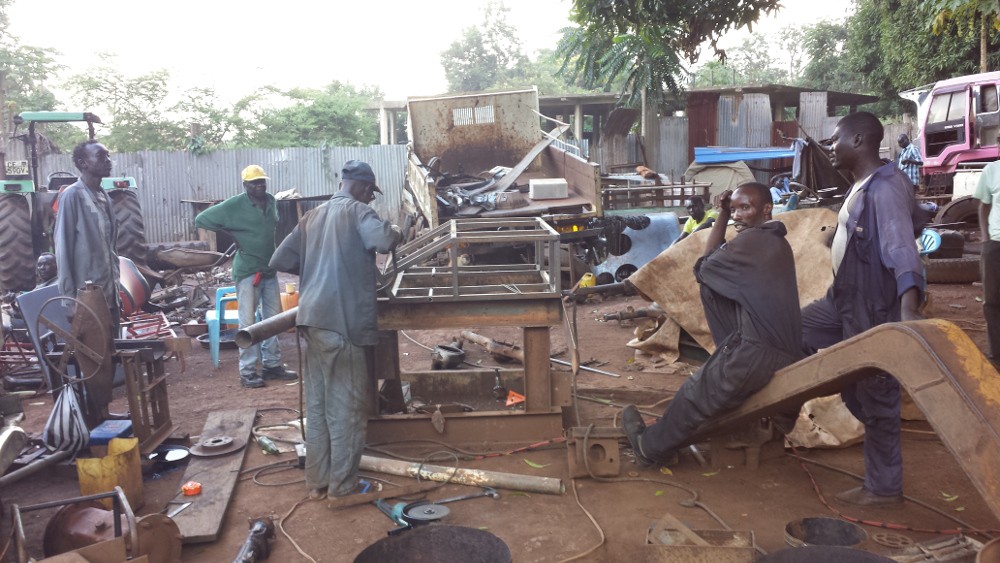
Working on the new frame
I have been talking with these guys a lot about this project, and we have been sharing ideas. I was excited for the second version of the utility vehicle to build it with these guys. I have been redesigning the body of the vehicle for quite a while so that it included such luxury items as suspension, and a place for people to sit. I have been thinking a lot about suspension, and how to source something locally which I can also find on a continuous basis. I've come back to the mass produced motorcycles as a nice cheap source of coil over shock suspension. I can get them for about $15 a pair. I am trying out a trailing arm suspension system, that is really similar to the back end of a motorcycle. I want to make sure nothing is too complicated to build, because I am hoping that welding shops like this one are the places where these vehicles could be produced.
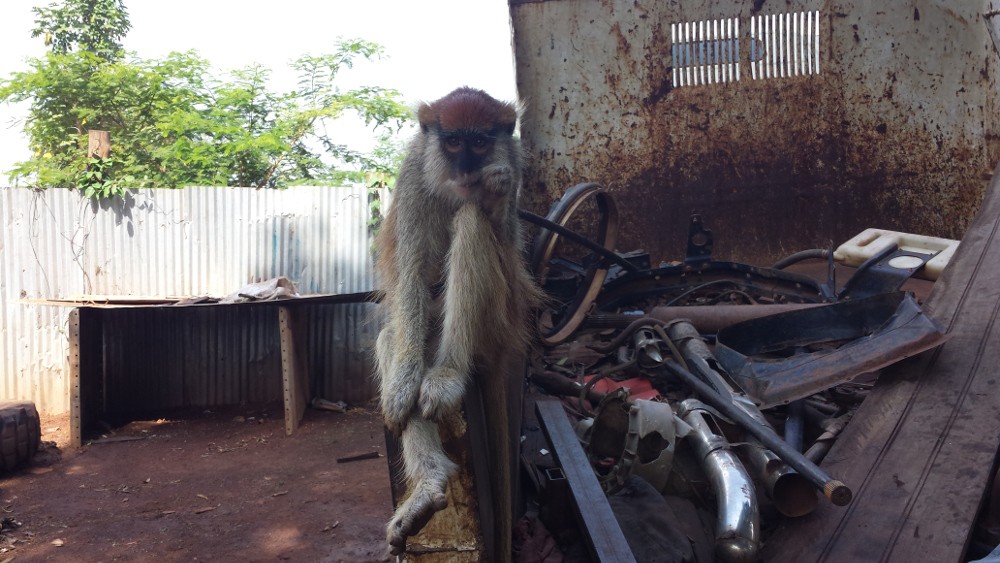
The mascot of the welding shop
I used sketchup to model the frame. While it is not a great tool some applications, I find it great for modeling with standard steel sections. It let me confirm clearances for motors and batteries. I cut all the frame elements, and took them to Anwar's shop to assemble them.
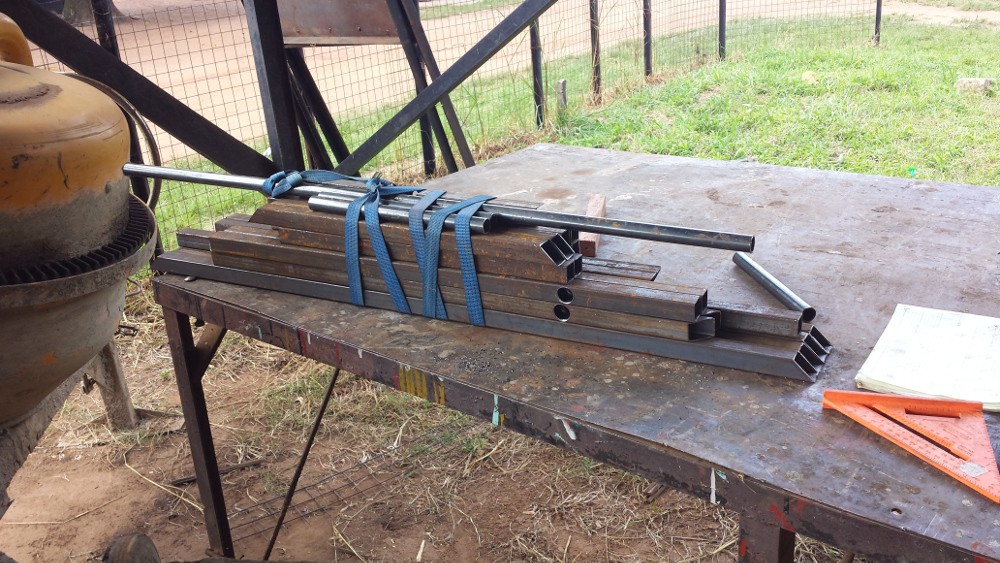
Pieces for the front section ready for assembly
Everything was designed to be assembled easily. I assembled the frame over the course of a few days, but I think I could do it in one day if I was set up. I am really trying to not use anything specialized, and only standard steel sections. Rolled sections have a welded seam which makes them not really useful for bushings, however I've found that 1/2” water pipe with a slit cut in it slots inside the pipe I am using and makes a great low friction bushing for the suspension.
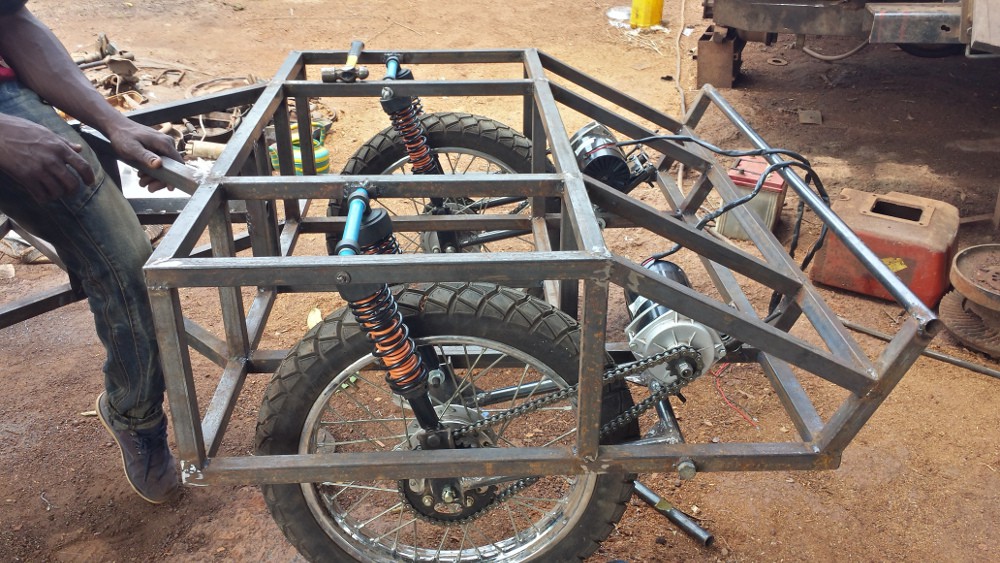
I will try to update with more detail, but you can get a general idea from the photo of how the suspension works. The motors have to be mounted on the arms so that chain tension remains constant.
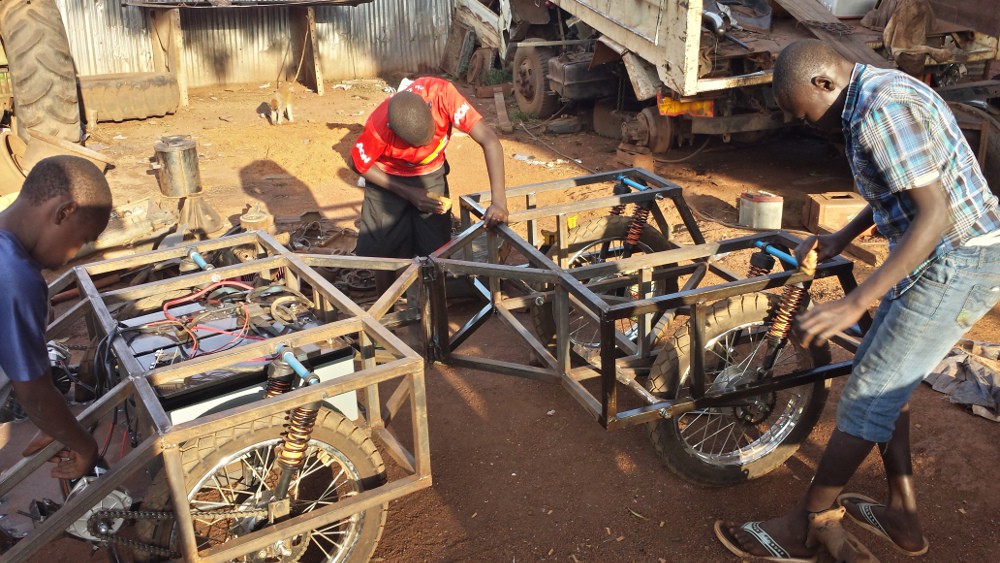
We finished assembly of the frame, and took a quick test drive through town, which got a lot attention in town.
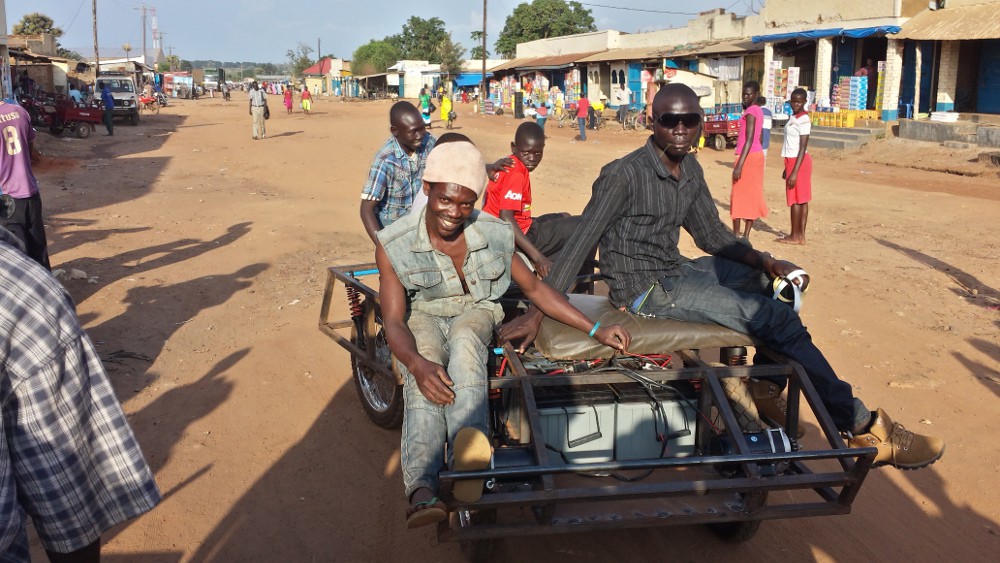
 Chris Low
Chris Low
Discussions
Become a Hackaday.io Member
Create an account to leave a comment. Already have an account? Log In.